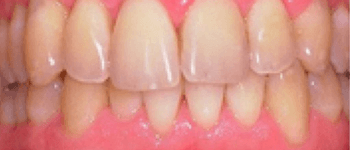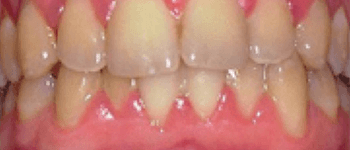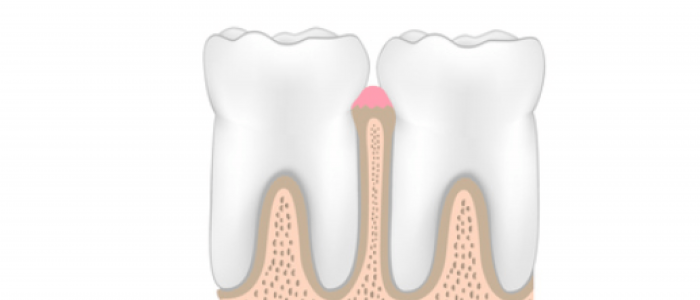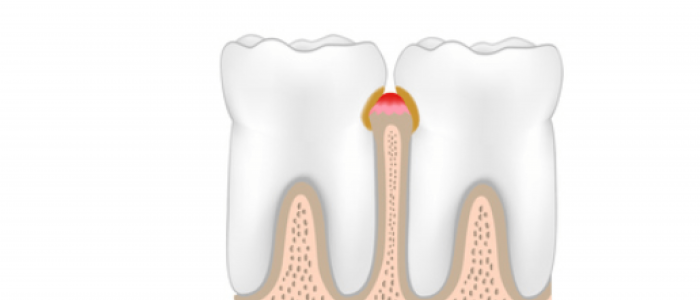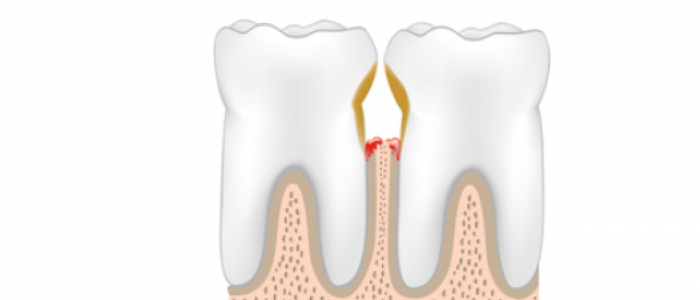Why is gum health important?
Gum health is critical to the well-being of your oral health. In fact, your gums are every bit as important as your teeth are. After all, it's your gums that support the teeth and keep them in place. Neglecting your gum health leads to gum disease, known as gingivitis and periodontitis. Gum disease can occur in adults of any age. If left untreated, gum disease causes your teeth to become sensitive and loose. Neglecting to treat your gum disease will eventually lead to tooth loss. It turns out, gum disease is the number one cause of tooth loss among the adult population.
What are the signs and symptoms of gum disease?
Gum disease is categorized based on the extent of damage to the jaw structure. Early-stage gum disease is referred to as gingivitis. Late-stage gum disease is known as periodontitis. Here are the signs and symptoms of the stages of gum disease:
Gingivitis
Gingivitis is gum disease that is restricted to the gum tissue. At this point, the infection is relatively contained as it has not spread to the jawbones. Signs of gingivitis include bleeding gums, bad breath, and generalized tooth sensitivity.
Periodontitis
Periodontitis occurs when gum disease spreads from the gum tissue to the jawbone. Periodontitis is a much more serious oral condition. It causes bone loss, looseness of teeth, and even teeth separation. If left untreated, periodontitis will eventually lead to tooth loss. Untreated periodontitis compromises your overall health and well-being. The infection can spread through your bloodstream and sinuses to the rest of your body. Advanced periodontitis has been linked to heart conditions and other systemic medical issues.
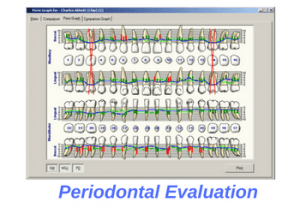
Advanced peridontitis has been linked to heart conditions and other serious medical issues
How do you diagnose gum disease?
Your dentist should be able to diagnose and treat your gum disease. First, they have to examine your X-rays and look for symptoms of bone loss. Your dentist will perform a visual exam to look for areas of redness, inflammation, and gum recession. A definitive diagnosis of gum disease requires a full periodontal gum evaluation. This includes measuring your periodontal pocket depths, checking for sites of gum recession, and accessing tooth mobility. After completing a full periodontal exam, your dentist can determine if you have gum disease as well as the stage of the disease. From there, you can start planning a treatment outline to treat your gum disease and determine how frequently you require dental cleanings to maintain healthy gums.
What are the treatment options for gum disease?
Treating gum disease typically starts off with a comprehensive and thorough dental cleaning. A full periodontal gum evaluation is required to determine the correct type of dental cleaning. Dental cleanings are typically categorized as regular dental cleaning, full mouth debridement, and deep cleaning. Here's what you need to know about the different types of dental cleanings:
Regular Dental Cleaning
Regular dental cleaning is recommended in the absence of gum disease. Regular dental cleanings are relatively simple and pain-free. Treatment is completed during a single visit. The cleaning usually takes about 30 to 45 minutes, maybe an hour at most. Your dentist or hygienist will schedule you for your next cleaning which would be in 6 to 12 months.
Full Mouth Debridement
If you're suffering from gingivitis, but not periodontitis, then you require a more comprehensive dental cleaning. This is known as full mouth debridement. Full mouth debridement involves light scaling of teeth roots to remove tartar and offending bacteria. Occasionally, your dentist may prescribe an antibiotic, oral rinse, or other adjunct treatment. Full mouth debridement is typically performed during a 45 to 60-minute appointment. Your dentist or hygienist will recommend a follow-up dental cleaning in 4 to 6 months.
Deep Cleaning/Scaling & Root Planning
If you suffer from advanced gum disease, aka periodontitis, you will require deep cleaning. Deep cleaning, also referred to as scaling and root planning, is the only way to effectively remove tartar and restore your gum health. The objective of deep cleaning is to remove all tartar and offending bacteria from the hard-to-access root surfaces. The deep cleaning process involves rigorous scaling of the teeth surfaces along with the planning of teeth roots. Deep cleaning sessions take about an hour to complete. Treatment is typically performed over two to four appointments. This allows your dentist or hygienist to focus on a specific region of the mouth during each deep cleaning session. Most patients who receive a deep cleaning require follow-up dental cleanings every 3 to 4 months. It's usually not recommended to wait the full six months, as you may incur additional harm to your teeth and gums during a long wait period. Your dentist or hygienist will help you determine your next cleaning to monitor your oral health.
What is deep cleaning?
Deep cleaning is a rigorous dental cleaning for those suffering from moderate to advanced periodontal disease. Deep cleaning removes heavy tartar deposits from teeth and root surfaces. Most deep cleaning sessions are completed during two to four sessions. This allows your dentist or hygienist to focus on thoroughly cleaning small portions of your mouth during each visit for the best results. Typically, deep cleaning procedures are performed under anesthesia to minimize pain and discomfort. Deep cleanings are performed using a cavitron and/or hand instruments:
- Cavitron is an ultrasonic device that uses vibration to loosen and dislodge stubborn plaque and tartar particles from your teeth.
- Hand instruments are sharp metal objects, known as scalers, that manually scrape the tartar from teeth surfaces.
It's not uncommon for your dentist or hygienist to recommend using additional antibiotics, oral irrigation, or even laser to achieve the best outcome. After finishing your deep cleaning, your dentist or hygienist will recommend a follow-up appointment. Follow-up appointments are scheduled within a few months. Your dentist or hygienist will evaluate your gum tissue to look for signs of improvement. If your gum disease fails to resolve itself, more advanced treatment may be recommended. This could involve treatment such as osseous gum surgery, laser debridement, and other complex periodontal therapy treatments. You may also be referred to a periodontist, who is a gum specialist, for further treatment.
